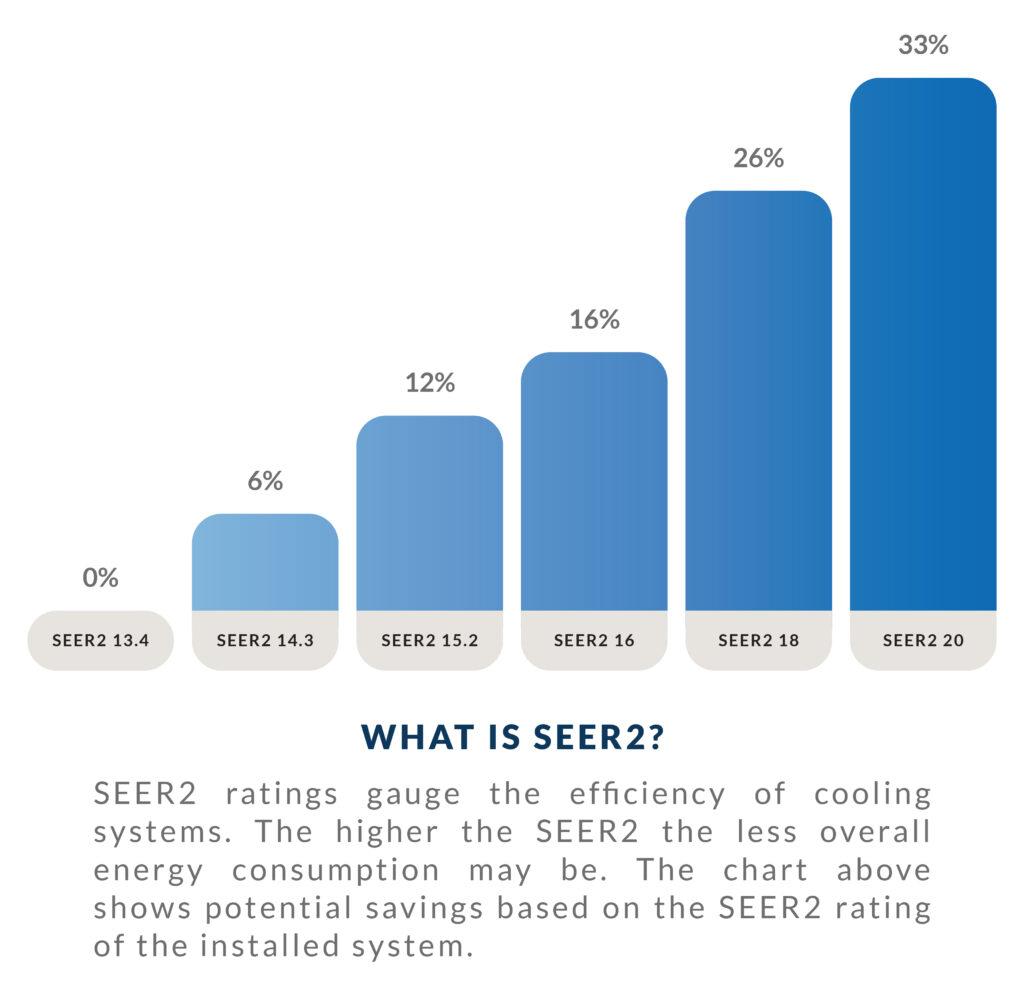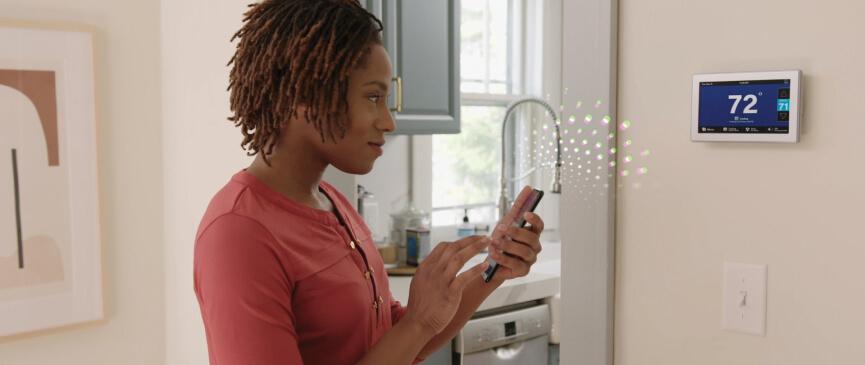What Size AC Unit Do I Need?
Summary: The right size AC unit will be based on more than your home’s square footage. Get a professional load calculation for the best results.

By Anne Fonda
Investing in the right HVAC unit for your home is more than choosing a quality brand and warranty. One of the first questions you should ask your American Standard dealer is, “What size air conditioner do I need?”. Understanding how the size of an air conditioner (AC) will affect your home’s comfort will help illustrate why bigger isn’t always better in the HVAC world.
Contact your local American Standard dealer
Why does AC unit size matter?
Just like Goldilocks, your air conditioner can't be too big or too small. Choosing the right size air conditioner for your home will help your cooling system work much more efficiently. When your system is too large or too small, you may battle an uncomfortable indoor climate and higher energy costs.
Air conditioner (AC) too small
Purchasing an air conditioner that’s too small for your home means the unit runs constantly and the indoor temperature is rarely cool enough. It may have trouble controlling the humidity as well. It’s also possible you could experience uneven cooling throughout your home.
Air conditioner (AC) too large
Purchasing an AC system that’s too large for your home can cause the unit to constantly turn on and off. A larger unit will turn on, quickly lower the indoor temperature, and shut down. This is called short cycling.
When the AC is too large, the unit does not run long enough to regulate humidity or mix enough air in your home due to the short run times. You may feel cool but sticky as a result. Repeating that cycle many times throughout the day causes advanced wear and tear on your AC unit.
Follow these steps to help ensure you get an air conditioning system that’s the right size and will provide the comfort and efficiency you deserve.
Step 1: Find the air conditioner type that best fits your home
There are three primary types of air conditioners, all of which cool in a very similar way. Your home likely has one of the following systems: split-system central air conditioner, packaged air conditioner, or ductless AC unit.
Split system HVAC
The most traditional AC unit is the split-system air conditioner. This HVAC system has an outdoor unit and an indoor unit that work together to cool and control the humidity level in your home. A multitude of options exist with this type of AC unit. By partnering with an American Standard dealer, you can choose a split-system AC based on your desired energy-efficiency level, noise level, and budget.
Packaged AC unit
A packaged air conditioner system consists of a single outdoor unit. All necessary mechanical parts, like the evaporator coil, compressor, and condensing coil, are in the unit. The packaged system utilizes your home’s ductwork to cool the appropriate spaces. Packaged units also come as heating and cooling units in one. Based on your needs and desire for an energy-efficient unit, you can choose from single- or two-stage systems.
Ductless air conditioning
The ductless air conditioner has one outdoor unit (ductless heat pump) that connects to one or more indoor units mounted on the wall, ceiling, or floor. The indoor units are designed to cool (or heat) one or multiple zones.
Ductless mini-split systems are best suited for homes without ductwork, home additions, garages, and other spaces. You can adjust the temperature in each zone to make one room much cooler or warmer than another for custom comfort.
Step 2: Request a Manual J calculation
You should ask your HVAC company to perform a Manual J calculation. The Manual J load calculation considers many of the home and environmental characteristics, giving you a very accurate calculation for the AC size you need for your home.
“The only way to know for sure what size AC you need is to have a load calculation performed on your home, which is a process usually done by an HVAC installer. The load calculation will take into account your home’s construction, the amount of insulation that you have, the condition of your ductwork, window efficiency (for example, single pane windows vs double pane), ceiling height, square footage, and your local weather to figure out what size system you need,” said Mark Woodruff, Senior Product Manager, Ducted Outdoors.
“Beware of dealers who don’t perform load calculations and rely either on very basic rules of thumb or just want to replace your system with whatever you currently have. Those are usually signs that you should find a better dealer.”
- Mark Woodruff, Senior Product Manager, Ducted Outdoors
Step 3: Get a ballpark estimate with an air conditioner size chart
For accurate sizing, work with an HVAC professional. However, you can get a ballpark estimate of HVAC sizing by using the square feet method. This AC tons per square foot calculation is not as accurate as the Manual J load calculation, but can give you an idea of the system capacity you will need.
According to Kimberly Sexton, Senior Systems Engineer, “This calculation has evolved due to construction material and insulation requirements used today vs historically. Traditionally, this estimation would be 600 SF/ton for residential homes.
But with the updated insulating material used in new construction, it may be closer to 1000 SF/ton for residential, running an actual load, especially as new construction could significantly decrease your initial cost and yearly energy load.”
Working with a professionally trained American Standard Customer Care dealer is the best way to determine the right size AC for your home. Don’t make a purchase without getting a load calculation. This AC tons per sq. ft. table is based on the 600 sq. Ft. Per ton estimate, but remember, your insulation or lack of it can greatly affect the size of the HVAC system you need.
You should know that capacity is measured in tons, and that one ton = 12,000 BTUs (British Thermal Units).
| Home size (sq. ft.) | Air Conditioner Size (tons) | Unit Size (BTUs) |
| 900 | 1.5-ton AC unit | 18,000 BTUs |
| 1,200 sq. ft. | 2-ton AC unit | 24,000 BTUs |
| 1,500 sq. ft. | 2.5-ton AC unit | 30,000 BTUs |
| 1,800 sq. ft. | 3-ton AC unit | 36,000 BTUs |
| 2,100 sq. ft. | 3.5-ton AC unit | 42,000 BTUs |
| 2,400 sq. ft. | 4-ton AC unit | 48,000 BTUs |
| 3,000 sq. ft. | 5-ton AC unit | 60,000 BTUs |
Keep in mind that the square footage estimate shown in the AC sizing chart above is just that- an estimate. If you have really good insulation or just replaced your windows and doors, that could mean you need a smaller unit than the square footage would indicate. If your home has full sun exposure and no shade, that can influence sizing as well.
If your home is poorly insulated with a lot of drafts, you may want to consider getting a home energy audit and making weatherization improvements before getting a new HVAC system. This can save you money in heating and cooling costs for years to come.
Step 4: Review efficiency ratings for the AC size you need
Once you’ve determined which type and size of AC unit is best for your home, research the efficiency ratings of the type you need. Air conditioners are rated based on their energy efficiency and cooling capacity.
As you set out to answer “what size air conditioner do I need?”, it’s a good idea to be familiar with how those two components are represented. A system’s energy efficiency is signified by the Seasonal Energy Efficiency Ratio (SEER2), and the cooling capacity is measured in BTUh (British Thermal Units per Hour) or tons.
What is a SEER2 rating?
To develop a SEER2 rating, a unit’s cooling output - taken over an average cooling season - is divided by the total energy used. The higher the SEER2 rating, the more efficient the unit is at cooling your home.

American Standard offers AC units with SEER2 ratings ranging from 13 to our most efficient air conditioner units with a SEER2 of up to 23.6. Most higher SEER2 units have multi-speed or variable cooling speeds.
What is a BTUh rating?
The BTUh rating speaks to how much energy your air conditioner or HVAC uses to remove heat from your home within one hour. This cooling power result is referred to in terms of tons (or tonnage) or BTUh. A cooling capacity of one ton is equal to 12,000 BTUh. Air conditioners for your home have a tonnage rating.
Those ratings fall within 0.5-ton increments, and create a scale of 1.5, 2, 2.5, 3, 3.5, 4, 4.5, or 5-ton units. For example, when considering what size air conditioner is needed for a 2,000 square foot home, you would likely choose a 3 or 3.5 ton unit, depending on the climate where you live.
Step 6: Choose the best AC installation company
American Standard partners with the most trusted independent dealers. When your HVAC needs are in the hands of an American Standard Customer Care dealer, you can rest assured your home will be treated like one of our own, and you'll be treated like family.
Anne Fonda, Content Writer
A Content Writer with Trane Technologies, Anne Fonda researches topics and writes for Trane® and associated residential HVAC brands. She works in collaboration with Trane Technologies subject matter experts, offering easy-to-understand, informative content on complex topics. Her goal is to help consumers make informed decisions on the products and services they need.
She has written for HVAC and other service provider websites for over 16 years. Before transitioning to web content writing, Anne had a 14-year stint as an award-winning journalist. She graduated cum laude from the University of Missouri-Columbia School of Journalism.
When she’s not working, Anne enjoys playing word games, reading, gardening, spending time with family, and visiting gardens and museums.
Expert review by Mark Woodruff, Senior Product Manager, Ducted Outdoor and Kimberly Sexton, Senior Systems Engineer






